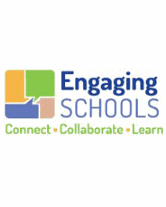Conflict Resolution Activities for High School Students
In today's society, the ability to peacefully resolve conflicts is more important than ever. This is particularly true for high school students, who are navigating a complex social environment daily. This article explores a variety of conflict resolution activities for high school students, providing educators with the tools they need to teach these critical life skills.
For high school students, these skills are essential for navigating their daily interactions both in and out of the classroom. Teachers can play a crucial role in helping students develop these competencies by integrating conflict resolution activities into their curriculum.
What is conflict resolution?
Conflict resolution is the process by which two or more parties engaged in a disagreement, dispute, or debate reach an agreement resolving it. Several skills are needed for you to resolve conflicts in the workplace effectively, including communication, problem-solving, and negotiation.
High school students may need to learn conflict resolution because it's a critical life skill that allows them to navigate challenging situations both in and out of school. This includes resolving disagreements with classmates, teachers, friends, and family members.
Conflict resolution skills can help students understand different perspectives and develop empathy and respect for others. It can also foster a positive learning environment and promote effective teamwork. Additionally, these skills will continue to be valuable in their future workplaces and personal relationships.
10-minute conflict resolution activities for high school students
These conflict resolution activities are intended to promote positive community-building.
Note: In all activities, students should have the opportunity to pass if they so desire.
1. Anger Ball-Toss
Find a softball. Have the class stand in a circle. Begin by completing the sentence, "I feel angry when ..." Ask for a volunteer who is willing to restate what you just said. Toss that student the ball. That student restates what you said, and then completes the sentence for herself. She then tosses the ball to someone else, who repeats what she said, then completes the sentence for himself, and so on.
2. Feelings Check-In
Pass out markers and 5x8 index cards. Ask each student to write one word on the card in large letters that describe how he or she is feeling. Then ask students to hold up their cards and look at the variety of responses. Point out how rare it is for different people to bring the same feelings to an experience or situation. Invite students to share why they wrote down the words that they did.
3. “I Got What I Wanted…”
Have students complete the following sentence: "A time I got something I wanted was when ...”
4. I Represent Conflict
Place yourself in the middle of the room and say, "Imagine I represent conflict. Think about how you usually react when you experience a conflict personally or witness a conflict happening nearby. Then place yourself, in relation to me, somewhere in the room in a way that indicates your first response to conflict or disagreement. Think about your body position, the direction that you're facing, and the distance from conflict."
Once students have found a position relative to you in the room, ask individuals to explain why they are standing where they are. You might also want to ask, "If this represents your first reaction, what might your second reaction be, after thinking about the conflict?"
5. Putting Up a Fight
Go around the group and have students answer: "What is something you have that you would put up a serious fight for--even risk your life for--if someone tried to take it away?" (This can be a material thing, like a gold chain, or something intangible, like a good reputation.) Then ask: "Why is this so important to you?”
6. Standing Up
Have students describe a time they felt they were being taken advantage of and they stood up for themselves.
7. What Color is Conflict?
Cut up a large quantity of 4x4 construction paper squares in a wide variety of colors. Be sure to have plenty of red, black, brown, and gray. Ask each student to choose a color or group of colors that she thinks represents conflict. Either in the large group or in smaller groups of five or six, have participants share the colors they chose and why they chose them. (If you split up into smaller groups, come back together at the end and have volunteers share with the whole group which colors they chose and why.)
8. “What Would You Do…?”
Go around the group asking each student to respond to this question: "If you saw a fight starting in the street between two people you didn't know at all, what would you do?”
9. “When I’m in a Conflict…”
Go around the group, asking each student to complete the sentence, "When I get into a conflict, I usually ..."
Excerpted from Conflict Resolution in the High School by Carol Miller Lieber with Linda Lantieri and Tom Roderick.
In Conclusion
In conclusion, teaching conflict resolution to high school students is an invaluable investment in their emotional intelligence. By incorporating these short, engaging activities into the curriculum, educators can help students navigate their interpersonal relationships more effectively. Not only will this foster a more harmonious school environment, but it will also equip students with a vital life skill that will serve them well beyond the classroom.




